- About MAA
- Membership
- MAA Publications
- Periodicals
- Blogs
- MAA Book Series
- MAA Press (an imprint of the AMS)
- MAA Notes
- MAA Reviews
- Mathematical Communication
- Information for Libraries
- Author Resources
- Advertise with MAA
- Meetings
- Competitions
- Programs
- Communities
- MAA Sections
- SIGMAA
- MAA Connect
- Students
- MAA Awards
- Awards Booklets
- Writing Awards
- Teaching Awards
- Service Awards
- Research Awards
- Lecture Awards
- Putnam Competition Individual and Team Winners
- D. E. Shaw Group AMC 8 Awards & Certificates
- Maryam Mirzakhani AMC 10 A Awards & Certificates
- Two Sigma AMC 10 B Awards & Certificates
- Jane Street AMC 12 A Awards & Certificates
- Akamai AMC 12 B Awards & Certificates
- High School Teachers
- News
You are here
Mathematical Treasure: Kepler’s Harmony of the Worlds
His search for order in the universe led Johann Kepler (1571-1630) to the five Platonic Solids and their ordering as a divine plan for the movement of the planets. He articulated this theory in his Mysterium Cosmographicum (1596), but felt that his theories warranted further explanation and refinement. In 1619, he attempted to provide this with the publication of Harmonices mundi [Harmony of the Worlds] and noted in its “Preface”:
I am writing a book for my contemporaries or – it does not matter – for Posterity. It may be that my book will wait for a hundred years for a Reader. Has not God waited for 6000 years for an observer?
Of course, “the observer” he is writing about is himself. The Harmony consisted of five books in which Kepler explored regular polyhedra further, gave the first systematic treatment of tessellations, provided a proof of the existence of only thirteen convex uniform polyhedra, and stated his third law of planetary motion.

Book I of the Harmony is devoted to “Regular Figures”:
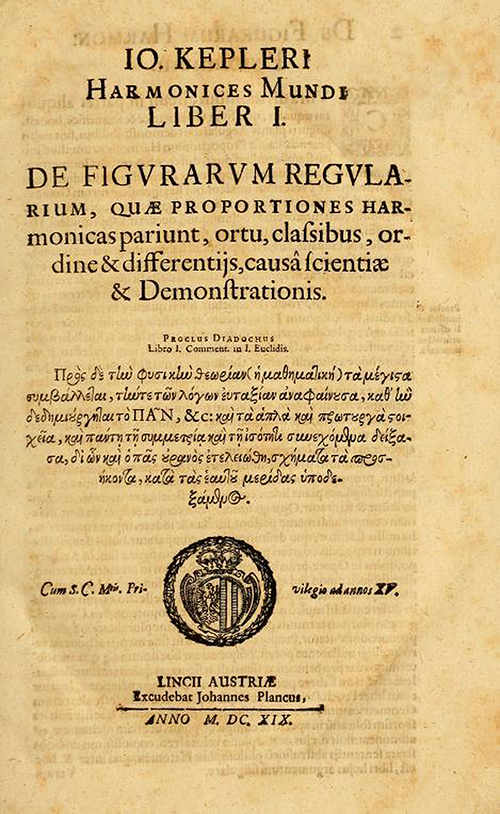
On the pages below, construction and properties of regular polygons are discussed and illustrated.

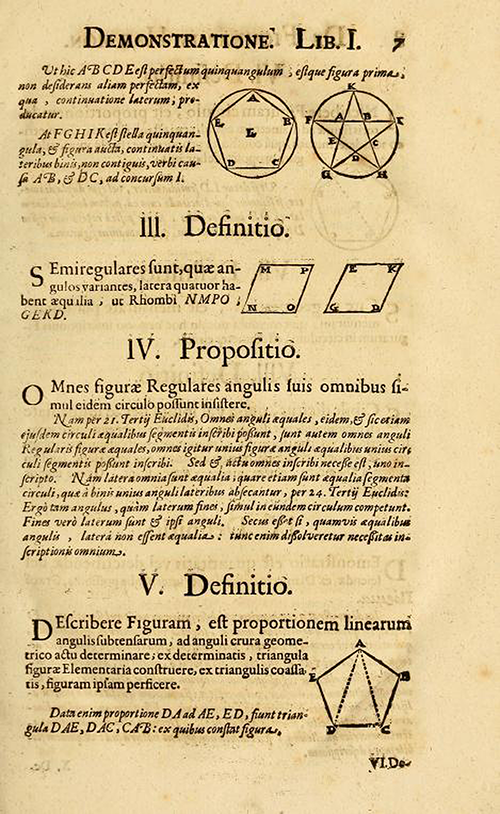
Kepler’s consideration of regular polyhedra included both truncated and stellated polyhedra:

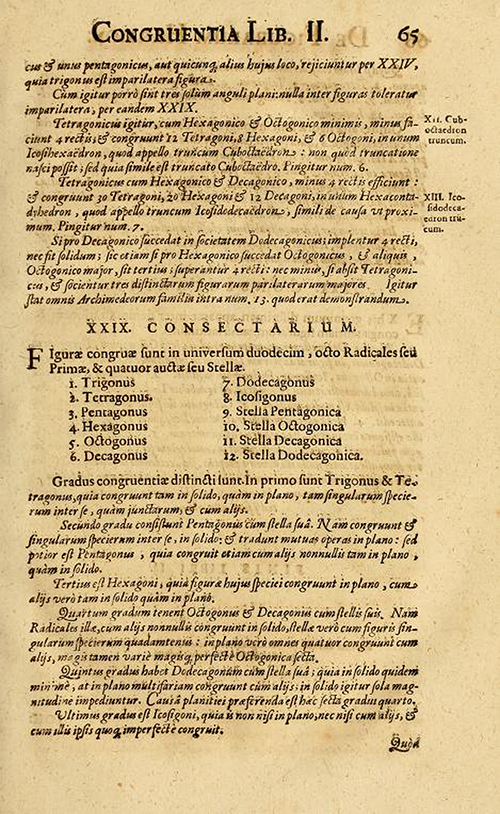
A plate of illustrations clarifies Kepler’s geometric experimentation:

In Book III, Kepler discusses “the music of the spheres.” Here, Kepler broke with Pythagorean tradition by establishing his own scale of musical harmonics based on geometric proportions. After all, for Kepler, God was the “Supreme Geometer.”
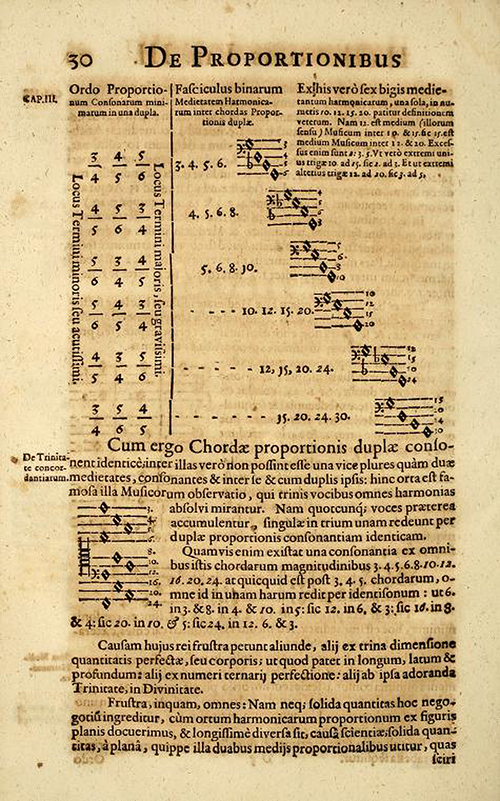
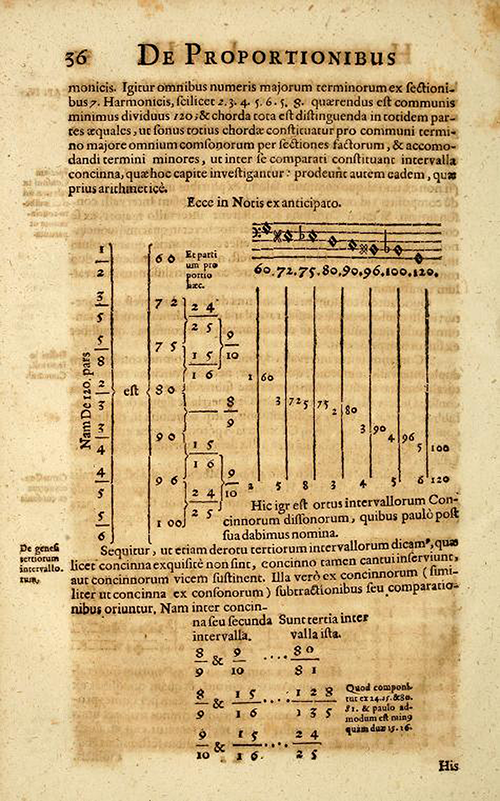
In Book V, Kepler focused on the Five Platonic Solids as the schema for orbital motion.


The images above were obtained through the courtesy of the United States Library of Congress.
For images from another copy of this book, see Mathematical Treasure: Kepler's Harmonices mundi.
Frank J. Swetz (The Pennsylvania State University), "Mathematical Treasure: Kepler’s Harmony of the Worlds," Convergence (May 2017)




